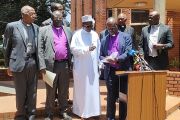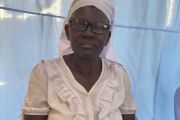The Enhancing institutional capacity for education on cardiometabolic diseases (CMDs) and on-line blended learning project, funded by the Novo Nordisk Foundation, aims to strengthen the education of health professionals, thereby reducing inequity in health for people living in vulnerable positions in rural areas.
The project is being implemented in rural India and East Africa by various partners. In Kenya, implementing partners are Government of Kenya – MOH, AMREF Health Africa, Africa Population Health Research Centre, NCD Alliance Kenya, Kenya Conference of Catholic Bishops (KCCB), CHAK and Kenya Medical Training College.
CHAK is implementing the project in a hub and spoke model in its Medical Training Colleges (MTCs) and Member Health Units (MHUs) in six counties as follows:
- Nairobi County – PCEA Kikuyu Hospital and PCEA Kikuyu Nursing School; AIC Kijabe Hospital and AIC Kijabe College of Health Sciences
- Embu County – PCEA Tumutumu Hospital Training College and PCEA Tumutumu Hospital
- Uasin Gishu County – AIC Kapsowar Hospital and AIC Kapsowar Nursing School
- Kisumu County – ACK Maseno Hospital and ACK Maseno Nursing School
- Mombasa – Oasis Medical Centre
- Nakuru – PCEA Nakuru West Health Centre and PCEA Nakuru West Medical Centre
These health facilities and MTCs will be established as hubs during the initial project phase.
Project purpose
The project purpose is to strengthen the capacity of medical training colleges and their faculty in Kenya to provide quality education on cardiometabolic diseases through a combination of blended and e-learning methods.
The PEP project will strengthen health education systems, benefiting current and future health professionals. It will build institutional capacity of MTCs through faculty development, novel and innovative teaching and learning approaches and evidence-based education. The aim is to accelerate long-term improvements in pre-service and continuous professional education of health professionals on cardiometabolic diseases.
Quality education at MTCs, especially those located in rural areas, will provide health professionals with the requires skills and clinical experience to deliver CMD prevention and care for people living in vulnerable positions and consequently contribute to reducing inequities in health.
Faculty members will be trained on cardiometabolic diseases (CMD) and teaching pedagogy (on-line and physical) while in-service staff will be offered a short course CMD curriculum.
Rising burden of cardiometabolic diseases
Kenya is experiencing a rise in cardiometabolic diseases. Without accelerated health system responses, health inequities in accessing quality prevention of and care for CMDs are likely to increase, affecting people living in vulnerable positions the most. The rising burden of CMDs is placing heavy demands on Kenya’s health system and requires that health professionals are adequately equipped to provide patient centred and integrated quality CMD prevention and care delivery.
Medical Training Colleges (MTCs) in Kenya play a significant role in ensuring that mid-level health professionals are fit to provide CMD prevention and care to those who need it the most. Yet, quality education is hampered by gaps in the learning environment where evidence-based education and innovative and novel teaching approaches are insufficiently adopted.
Project Goal
The overall objective of the PEP programme is to improve equitable access to quality CMD prevention and care in rural/underserved areas and empower female health professionals to prosper in their professions.
Objectives
The main objective of this project is to build institutional capacity through online and blended learning and collaborative alliances for CMD education . Specifically, the project will:
a) Build institutional capacity for the education of health professionals.
b) Build MTCs capacity for innovative blended training methodologies that incorporate e-learning and mobile learning training approaches, and
c) Develop partnership network for CMD knowledge sharing and scaling of innovative approaches to institutional capacity building.
Expected outcome
The project is designed to last 24 months and aims to build a momentum for potential scale-up both in Kenya and the East Africa region in subsequent phases. Consequently, all the outcomes from this project are designed with the potential to anchor and inform follow-on phase deliverables.
Theory of change
IF (Intervention) we build institutional capacity for CMD education of health professionals, promote educational and implementation research on CMDs and health professionals, and develop partnership networks for CMD knowledge sharing and scaling of best practices and innovative approaches,
THEN (immediate and intermediate result), health education institutions in rural areas shall be strengthened with more and adequately skilled health professionals, meeting the needs of people in vulnerable positions; education/health implementation research shall increasingly be used to inform policy making; and the skill and career opportunities for female health professionals shall be strengthened.
THUS (long-term result), equitable access to quality CMD prevention and care services in rural/underserved areas shall improve, and female health professionals shall be empowered to prosper in their profession.











